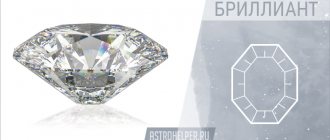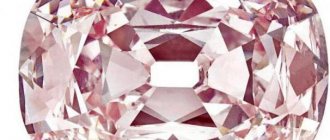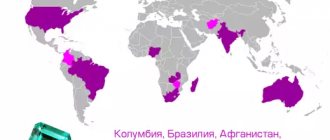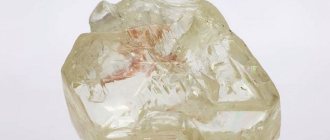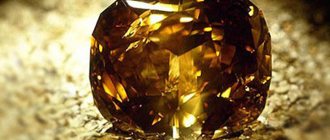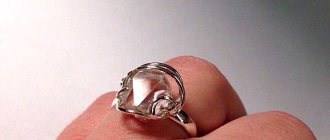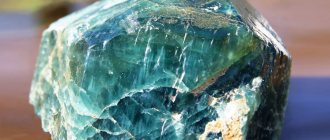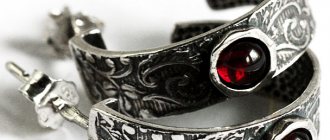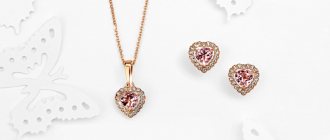Diamond is the hardest natural element on earth. It also has the highest thermal conductivity and is used in a number of critical industrial applications. Diamonds have been known to us since ancient times and are believed to have been first discovered in India.
Today, the most popular use of diamonds is as gemstones for decorative items and jewelry. Basically, the value of a gemstone is based on its rarity. Diamonds, however, are more valuable and relatively common than other rare gemstones such as alexandrite. The annual global production of rough diamonds is about 130 million carats or 26 tons.
Below we have compiled a list of the largest diamonds in the world based on their weight. It includes large diamonds that are cut into smaller ones and those that are now lost. But before we begin, there are certain terms that you should become familiar with.
Carat: A measure of the weight of a diamond. One carat is 200 milligrams. Clarity: . Diamond clarity is a measure of inclusions, which can be foreign impurities or design defects such as cracks.
Golden Jubilee Diamond
Weight: 755.5 carats Cut weight: 545.67 carats. Owner: King of Thailand
The brown-colored Golden Jubilee Diamond is the largest cut diamond (of any color) in the world, approximately 15.37 carats heavier than the Cullinan I. By the way, the Golden Jubilee was discovered at the same diamond mine (Premier Mine in South Africa ) as "Cullinan".
Diamond has quite a rich cultural history. Immediately after it was purchased by Henry Ho, founder of the Jewelry Trading Centre, in Bangkok in 1995, the Golden Jubilee was sent to the Vatican to receive the papal blessing. He also received a blessing from the head of the Buddhist monks in Thailand.
Over the past years it has been exhibited in various places around the world, and is currently housed at the Grand Palace in Bangkok.
Diamond color
Another important characteristic of a diamond is its color. The ideal is stones without a tint or with a slightly bluish tint. The more yellowish or brownish the tint, the worse.
Characteristics of diamonds by color and clarity are fundamental to pricing. For example, the Gemological Institute of America publishes “Rapoport tables” every two weeks, which are, in fact, universal price lists for the world diamond market.
GIA has developed two diamond color scales: one is used for white stones, the other is used for the Fancy category (fancy colored diamonds). They exist separately from each other.
Diamond color variety
To evaluate the color of white stones according to GIA, an exclusively letter gradation is provided, from D to Z. At the beginning of the table, pure white stones are positioned, at the end - almost yellow ones, but not falling into the fancy category. Each sample is compared with a reference sample.
Diamonds with fancy colors have different indices, where both letters (color designations) and numbers are used. In these stones, on the contrary, bright and rare colors are most highly valued (of course, while maintaining purity and transparency).
The rating table for fancy diamonds does not include all the shades with which nature colors these incredible minerals. For example, there are no fantastic green and black diamonds that exist in single copies.
When assessing the color of a diamond according to Russian standards, samples are not compared with the standard. As with clarity, stones are graded based on weight (0.29 carats or more) and number of facets (17 or 57). Numerical gradation is used, but detailed verbal descriptions are also used.
Here is a comparative table of diamond color assessment according to GIA and GOST:
It is worth noting that the Russian system provides for the assessment of brown and even black stones. According to the GIA, these stones are classified as "board" and are considered technical. However, there is no separate scale for fancy-colored stones in Russia; such diamonds are assessed individually.
Millennium Star
Millennium Star Diamond
Weight: 777 carats Cut weight: 203.04 carats
The Millennium Star is the largest known colorless diamond in the world. It was discovered on the alluvial plains in the Mbuji-Mayi district of Zaire (present-day Democratic Republic of the Congo). It was acquired by De Beers, one of the largest diamond exploration and trading companies, during the civil war in the mid-90s.
The Millennium Diamond was first displayed publicly in 1999, as part of the De Beers Millennium Diamond Collection. In his book Diamond Geezers, journalist Chris Hollington detailed the diamond's history, including the attempted theft in 2000.
STONE CARE
It is recommended to clean diamond jewelry twice a year in an ultrasonic bath - this service is provided in many jewelry workshops. This procedure effectively removes dirt and grease from the surface of the product and stone, and also removes germs. During a visit to the jeweler, it would be a good idea to ask him to check the reliability of the stones in the jewelry.
• At home, jewelry with diamonds also needs to be cleaned and washed regularly (once every 1-1.5 months) so that the stones and products shine, sparkle, and look like new. A warm soapy solution made from shampoo, soap (not laundry soap) or dishwashing detergent (Fairy, for example) is suitable for this. The products should be left in a soapy solution for a while, and then cleaned with an old toothbrush or soft cloth. After this, diamond jewelry should be thoroughly rinsed in clean, cold water.
• Vodka, alcohol solution and ammonia are also suitable for cleaning diamond jewelry. It is enough to immerse the jewelry in there for 20-30 minutes, and then remove the dirt using an old toothbrush or cotton wool wrapped around a toothpick - this design will allow you to clean hard-to-reach areas of the product.
• Do not clean diamonds or items containing them with substances containing abrasive particles, any chemicals, or soap containing alkali.
• Velvet boxes, bags or lockable boxes, the size of which corresponds to the number of items stored, are suitable for storing diamonds. Decorations should not scratch against each other. It is not recommended to store diamonds in the bathroom - high humidity will not do them any good.
Diamond "Great Mogul"
Copy of the Great Mogul diamond |
Image courtesy of Wikipedia Weight: 787 carats Cut weight: 280 carats
The world's ninth largest diamond, the Great Mughal Diamond, is believed to have been discovered sometime around 1650 at the Kollur mine in present-day Andhra Pradesh, India. The diamond came into the possession of Shah Jahan, the fifth ruler of the Mughal dynasty (he received it as a political gift).
For decades, it remained one of the most famous stones in the Mughal Empire. Around 1665, Shah Jahan's son, Aurangzeb, gave it to Jean-Baptiste Tavernier, a 17th-century French traveler and gold merchant. He described the diamond as; "The stone has the same shape as if you cut an egg through the middle."
The Great Mogul mysteriously disappeared in the mid-1700s and has never been found. However, many historians believe that the lost diamond was cut to create Orlov.
Kohinoor
Glass copy of the diamond after recutting
Weight: 793 carats Cut weight: 105.6 carats.
Kohinoor is perhaps one of the most popular as well as controversial diamonds on earth. Since its discovery, most likely in the 12th century, at the Kollur mine (located in Andhra Pradesh, India), the Kohinoor has been part of many historically significant crown jewels and ornaments.
In 1849, the diamond came into the possession of the British Empire and was reduced from 191 carats to its current size. It is currently on display in the Jewel House of the Tower of London.
For decades, the Kohinoor Diamond has caused diplomatic controversy between India, Pakistan, Afghanistan and Britain, all of whom claim to be its rightful owners.
Lesotho diamond weighing 910 carats
Weight: 910 carats
The 910-carat Lesotho diamond is the seventh largest gem-quality diamond in the world. It was discovered in the Letseng diamond mine in Lesotho (a small landlocked country in Africa) in 2022.
The Letseng Diamond Mine is renowned for producing some of the world's most expensive stones. In 2015, a 357-carat diamond from the Letseng mine sold for approximately $20 million.
Experts estimate that a 910-carat Lesotho diamond could be worth more than $40 million.
HOW TO DISTINGUISH FROM A FAKE
Many diamonds in jewelry nowadays are being replaced by artificial ones. The most commonly used artificial variety is called cubic zirconia. There are a number of ways to distinguish artificial cubic zirconia from a natural diamond. The physical properties of the gem give it the ability to refract light rays in such a way that light or any objects cannot be seen through the mineral. When you put the ring on and look at the diamond, you won't see your finger. If you hold a mineral close to a newspaper, you will not be able to see either the paper or the letters through it. Other stones that can be used to fake a gem do not have similar properties. Water, glycerin and methylene iodide will help distinguish a diamond from an artificial spinel and sapphire. Counterfeits will not shine in these liquids, but the real mineral will shine brightly. Diamond is the hardest mineral. The hardness of the stone gives it resistance to any kind of damage and scratches.
If you rub a natural gem with sandpaper, it will retain its integrity. Another mineral will be damaged. Natural stones are cold. Even in extreme heat, gems retain this quality. When you pick up a natural diamond, you notice its coolness. Hydrochloric acid will leave stains on cubic zirconia, but it will not have any effect on a diamond. If you breathe directly onto an artificial stone, it will fog up, unlike a natural diamond. If you lubricate the surface of a natural mineral with oil and apply it to glass, it will stick. Look at the stone through a magnifying glass. Artificially grown stones, unlike a diamond, which always has inclusions, are perfectly clean.
Star of Sierra Leone
Weight: 968.9 carats
The Star of Sierra Leone was a large emerald-shaped stone discovered in mines near the city of Koidu in Sierra Leone (West Africa). A few months after its discovery, the diamond was purchased by a New York jeweler for $2.5 million.
The initial weight of the diamond was 143.2 carats. Later reprocessing of the stone produced 17 smaller diamonds, thirteen of which were virtually flawless.
Sierra Leone Star is also known for its chemical purity.
Diamond Excelsior (Excelsior)
Weight: 970 carats
The Excelsior was the largest diamond in the world until Cullinan's discovery in 1905. At the time of its discovery, this rough stone weighed 971 carats (about 194.2 grams) and was shaped like a leaf. It was discovered in the Jagersfontein mine in South Africa in the Northern Cape province.
In 1903, the diamond was cut into 11 pieces of different weights. The reason was that it was too big and expensive for any buyer.
At the time, the decision to split Excelsior into smaller pieces was widely criticized. Experts also opined that the diamond must have been cut to produce one of the largest diamonds.
In the 1990s, Excelsior I (69.68 carats) sold for approximately $2,642,000.
Regent's Diamond
The Regent Diamond, also known as the Queen of Hearts, was found in 1698 by a slave in a mine who eventually paid for it with his life. The captain who found a hidden diamond killed a slave, sold the stone weighing 410 carats
to an Indian trader and then to a British businessman, Thomas Peet, in 1701. It was reduced to 141 carats.
The Regent Diamond is considered one of the most beautiful in the world. It is white, but with a subtle bluish tint that not everyone sees. The diamond became the adornment of Marie Antoinette, Napoleon, King Louis XVIII, Charles X and Napoleon III
. Now it is in the famous Louvre Museum.
Diamond "Millennium Star"
The Millennium Star is the 10th largest and 2nd largest D color diamond.
. Before cutting it weighed 777 carats, and after it weighed 203 carats. A majestic diamond without external or internal flaws was of exceptional purity.
The stone was purchased. It took more than 3 years to give the diamond its classic pear-shaped shape using lasers. "Millennium Star" with 11 blue diamonds
was mined from the Premier mine in South Africa. In 2000, these amazing diamonds from the Millennium collection were presented at an exhibition in London.
Diamond Taylor-Barton
The 241-carat diamond, from which the famous diamond was later made, was found in the Premier mine in South Africa. The famous jeweler Harry Winston cut the stone, which became pear-shaped and weighed 69.42 carats. A stone of amazing transparency and beauty became the first diamond sold at auction for more than a million dollars.
.
Its buyer was Richard Burton, who bought it for his wife, the famous actress Elizabeth Taylor. Elizabeth could wear such a treasure only a few times a year under the protection of guards, and the first time she appeared with it was at the celebration of Princess Grace's birthday in Monaco.
When the actress divorced Barton, she sold the diamond for $5 million and used the proceeds to build a hospital in Botswana. It is believed that this is the first time that a diamond brought anything other than misfortune.
.
Diamond “Our Light” (Lesedi la Rona)
Front view of Lesedi La Rona
Weight: 1111 carats Cut weight: 302.37
The Lesedi La Rona is the fourth largest gem quality diamond in the world. The diamond was bought by British jeweler Graff for $53 million in 2022, two years after it was discovered in Botswana.
In 2022, the diamond was cut and transformed into one large Graff Lesedi La Rona diamond weighing 302.37 carats and 66 smaller ones.
The diamond was originally named Karowe AK6, after the mine where it was found. Its name was later changed to Lesedi La Rona, which means "Our Light" in the Tswana language.
The discovery of Lesedi La Rona was made using the TOMRA X-ray diamond extraction machine. One TOMRA sorter can scan 150 tons of material per hour.
The most expensive diamonds and diamonds
Diamond "Sancy"
The most famous owner of the Sancy diamond is King Henry III
, who purchased the stone from his attorney Nicolas de Sancy. The stone served as a beret decoration to cover the king's premature baldness.
According to legend, the messenger who was supposed to deliver the stone was killed. However, the faithful servant kept the stone, which, after opening, was found in his stomach.
The diamond was sold to King James I of England and then to Cardinal Mazarin, who left it to King Louis XIV. During the French Revolution, it disappeared along with the Regent Diamond and the Hope Diamond.
As a result, Sancy was sold to the Louvre for a million francs
, and is still stored there. Its price has not been established, but it is considered priceless.
Diamond "Kohinoor"
The Kohinoor Diamond or the Mountain of Light has a long history.
. The first mention of it appeared in 1304, when King Babur discovered a diamond, and since then it passed to all the rulers of the Mughal Empire - a state in the modern territory of India and Pakistan.
Hindus, Mughals, Persians, Afghans, Sikhs and the British fought desperately for the right to possess it throughout history. Almost all Kohinoor owners suffered an evil fate: death, poisoning, betrayal
. From the once huge stone of 793 carats, 105 carats (21.6 grams) remain.
In 1850, the diamond was given to Britain's Queen Victoria, who wore it as a brooch for a long time. The famous Kohinoor was worn by Queen Alexandra, Queen Mary and is now in Queen Elizabeth's crown.
at the Tower of London. Its price has not been established, but it is considered priceless.
Diamond "Hope"
Perhaps the most famous diamond in the world is the Hope Diamond. No one knows how large the stone was before it was cut, where it was found, or who gave it its original shape. It was first mentioned by the French merchant Jean-Baptiste and sold to King Louis XIV.
Some experts believe that it was stolen from a statue of the ancient Indian goddess Sita
. It passed to King Louis XVI and Marie Antoinette, then was stolen and reappeared in 1829. Banker Henry Hope purchased the diamond and the stone is named after him.
The subsequent numerous owners of "Hope" suffered an unfortunate fate
: violent death, illness, loss of a child and accidents. The Doomstone gained the reputation of being cursed, and it was believed that everyone who touched it would die a terrible death.
Since 1958, the diamond has been in the Smithsonian Institution
in USA. Its price is $350 million.
Cullinan III
Portrait of Queen Mary wearing the four largest Cullinan diamonds.
Cullinan III on her necklace Weight: 3106.75 carats Cut weight: 94.4 carats
On January 26, 1905, a diamond measuring 10.1 cm long and 6.3 cm wide was recovered from a mine in the small town of Cullinan, South Africa. It was three times the size of the Excelsior diamond. At that time it was named after the chairman of the mine, Thomas Cullinan.
A few months after the discovery, the rough diamonds were offered for sale, but they did not sell, despite their growing popularity. In 1907, the diamond was purchased by the Transvaal Colony (formerly a British colony in modern-day South Africa) for £150,000 as a gift to King Edward VII of England.
By order of Edward VII, the Cullinan Diamond was cut into several pieces; about nine major and 96 minor. Three of the largest Cullinans, namely Cullinan I, Cullinan II and Cullinan III, are also the largest diamonds in the world.
The Cullinan III, also known as the Little Star of Africa, is a pear-shaped diamond weighing approximately 18.8 grams (94.4 carats) and is sometimes used by Elizabeth II, Queen of the United Kingdom.
PRICE
Diamonds
In ancient times, it was noticed that the seeds of the Ceratonia siliqua tree have a rare constant mass - 0.19 grams.
Because of this, they began to compare the weight of gems with the weight of these seeds. After this, the final answer was given - one carat, this is a value equal to the weight of one carob seed. Despite the fact that at present this method of measurement is no longer used, the term, consonant with the name of the tree, remains. The carat weight also remained unchanged – 0.2 grams. The price range of stones is quite wide. The price of a diamond depends on many characteristics of the stone:
- Cut
- Transparency
- The price of a stone increases many times over if it is perfectly transparent
- The absence or presence of cracks or inclusions in the stone - specimens with defects are many times cheaper
- Stone size. A 1-carat diamond can reach 6.5 mm in diameter. With high levels of transparency, purity and color, it can reach 12,000 USD.
- Color. The most expensive stones are colorless or have a blue tint. Colored diamonds, which are quite common, are cheaper.
Cullinan II
Cut weight: 317.4 carats
Cullinan II, also known as the Second Star of Africa, is the second largest stone carved from the original Cullinan. The diamond is one of the central elements of the Imperial State Crown (located under the large Black Prince Ruby), which is used during the coronation ceremony of the British Monarchy. The Cullinan II is a cut diamond with 66 facets. It has a number of scratches and minor imperfections.
Cullinan I
Nine largest diamonds cut from rough Cullinan (Cullinan I top middle)
Cut weight: 530.4 carats
The Cullinan I, commonly known as the Great African Star, is an almost pear-shaped diamond with 74 facets. In 1992, the Golden Jubilee Diamond surpassed the Cullinan I as the world's largest cut diamond of any color. The former, however, is still the largest clear cut diamond. Cullinan I was valued at $2.5 million (now about $51 million) in 1908.
Since 1910, Cullinan I can be seen atop the Scepter with a Cross, a decorative gold rod held by the monarch during coronation, which has been redesigned to accommodate it.
The diamond is set in such a way that it can be removed and worn independently. In 1911, Queen Mary wore four of the largest Cullin diamonds during her first State Opening of Parliament.
What is meant by the term “purity”
One of the fundamental characteristics of diamonds is clarity. It determines the number and color of foreign inclusions in a cut diamond, fracturing, and degree of transparency. An ideal sample has no inclusions and is considered a reference sample. However, there are no such diamonds: even the cleanest stones have some inclusions and cloudy areas.
Inclusions can be different: graphite, ilmenite, magnetite, garnet, malacolite and others like them - they determine the color of the defect (white opaque inclusions are most acceptable). A large number of dark large inclusions, visible to the naked eye, transfers the stone to the “pique” or “edge” category and brings down its price.
Parallel to purity there is the term “clarity”. It determines not only the presence of obvious inclusions, but also the transparency of the stone. Essentially, “purity” and “clarity” are the same thing.
External inclusions are called spots. Most of them are eliminated during cutting. But you have to put up with internal defects (inclusions): it is not always possible to eliminate them without significant losses in the mass of the precious mineral. So what? In a good stone they are practically invisible to the naked eye, but without words they prove its natural origin.
The GIA system adopts a letter-numeric designation of diamond purity (the decoding of abbreviations determines the quality of stones, quantity, color and size of defects), while GOST operates exclusively with numbers. When assessing any system, a magnifying glass with tenfold magnification is used.
According to the Russian standard, it is customary to take into account the mass and number of facets in a diamond. Depending on these parameters, the number of purity categories is allocated:
- small diamonds with 17 facets – 6;
- small with 57 facets, up to 0.29 carats – 9;
- medium and large with 57 facets, from 0.30 carats – 12.
The higher the number, the lower the purity level of the specimen being evaluated.
You can see the comparative characteristics of diamonds by clarity in the table according to GIA and GOST (TU) below:
What is the best diamond clarity?
The clarity of a diamond is considered good if it falls within the range of 1 to 6-7 according to the Russian classification (or up to SI3 according to GIA). Diamonds with clarity 1 and 2 are almost perfect, so their cost is prohibitive - such stones are available only to very wealthy people.
A diamond with a clarity rating of 3 means that you are dealing with a beautiful stone that has no more than three light inclusions that are indistinguishable to the naked eye. On the GIA diamond clarity scale, these grades are VVS 1 and VVS 2 (Very Very Small Inclusions).
Diamonds of groups 3 and 4 are very good from all points of view: they are excellent as inserts in exclusive jewelry (they are practically never found in standard jewelry - they are quite expensive). Stones with a clarity of 5-6 are also not bad: they represent the optimal combination of price and quality, therefore they are used in the production of jewelry in the mass sector (if this concept is generally applicable to jewelry with diamonds).
If you are investing in diamonds, it is advisable to choose stones with a clarity of 3-6. They are easy to resell, and diamonds will only become more expensive from year to year. Natural diamond reserves are gradually depleting.
